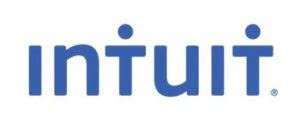
However, with a pragmatic budget and a lot of preparation, you can still set yourself up for long-term success. For example, every lawyer could get by using their local law libraries for research, but if you have to research often and the library isn’t next door, investing in the subscription might be worth it. And, while a legal conference might seem like a luxury, the referrals gained could pay off exponentially.
Develop a bookkeeping system

Accounting for law firms becomes so much easier when you work with an accounting professional from the beginning. Entering numbers manually often leads to mistakes and duplicated data entry in the accounting process. This results in wasted time, mismatched records, billing complications, and even compliance violations. We’ll also show you how legal accounting software can make the whole process easier (and more effective). It covers the fundamentals of setting the right financial goals at your firm. Creating a budget for your firm will help you forecast what money you can expect to come in.
The Top Accounting Software For Law Firms – Our List
While there are alternatives to Excel which have better security and improved capabilities, it’s understandable why many law firm owners and solo attorneys turn to Excel during the early days of their practice. Lawyers often use excel for time tracking, organizing casework assignment and status of cases, and financial reports. Plus, you can integrate Clio with more of your favorite apps than any other firm management software. It’s also important to keep accurate records and track funds in general retainers. Unearned fees (like general retainers) should be kept in a separate account so that they are not used in error.
- To ensure your firm’s financial statements are accurate, complete, and up-to-date, you need to use sound bookkeeping for attorneys.
- Consider trust accounts if applicable and create sub-accounts to monitor client funds.
- This represents everything from a recently opened law firm checking account to the cost of your office printers.
- Trust accounts are one of the most common areas where legal accounting mistakes are made.
- Lawyers know that tracking their time accurately is critical to their firm’s success.
- Why has accounting for law firms traditionally been such a hassle?
Client expense accounts
Many law firms use QuickBooks for their core accounting, but acknowledge that QuickBooks does not follow the rigid Trust Accounting rules. (Some law firms try anyway, or worse yet, use an Excel spreadsheet to manage trust accounts). CosmoLex includes client and matter management, time, billing, business accounting and trust/IOLTA accounting, thereby eliminating the need for QuickBooks or other accounting software. With CosmoLex, the financials of every client/matter is front-and-center, and intrinsically linked to each case. ProLaw comes in a number of packages and editions, some of which include ProLaw’s fully-featured accounting software. With ProLaw, your law firm can manage its clients, matters, billing, documents and accounting on a single package.
Identify high-revenue clients, payments and what receivables are due to be collected. From billable time and budgeting to write-downs and compensation, you’ll find actionable data in a click. Subsection 7(1) of By-Law 9 requires that a licensee’s Trust Account be designated as a Trust Account held in the licensee’s name or in the name of the Firm in which the licensee is a partner or employee. As such, your trust account should be clearly identified as “trust” on your bank statement and cheques. It is prudent to have Trust Accounts clearly identified by the banking institution as it helps prevent errors. Join lawyers from over 15,000 firms who trust MyCase to grow their firm while managing their caseload.
Liabilities
With a comprehensive chart of accounts, law firms gain valuable insights into their financial health. This allows them to make informed decisions, monitor profitability, and evaluate the success of different practice areas or client engagements. Creating an accurate, detailed legal chart of accounts is an important tool to give you an accurate picture of where your firm’s financials stand. Once set up, this information can give the visibility you need to ensure your firm stays compliant with accounting and trust accounting rules. Moreover, you can use the information from your law firm’s chart of accounts to help determine key financial details about your firm—which is necessary for making data-driven decisions.

To fix it, you have to go over each transaction to make sure it was entered into your accounting system properly. Recording them as anything but that could land you in hot water with regulators and mess up your taxes. To open any kind of business bank account, your practice needs to be registered with the state in which you are operating, have a registered business name and have an Employer Identification Number (EIN). Real-time updates and collaborative features enable seamless communication and efficient management of financial tasks, reducing the time spent on administrative duties. Server-based software is installed and runs on in-house servers, and users access it through the firm’s internal network. But leave the actual accounting to separate software (which it may integrate with).
Our clients
If you’re just starting out and think you’ve set up your accounting the wrong way, talk to a professional accountant or bookkeeper with experience dealing with IOLTA. You can’t, for example, pay for your firm’s operating expenses directly out of an IOLTA account. Some firms will https://www.bookstime.com/ also intentionally use their IOLTA accounts to hide assets, or will leave funds in their IOLTA even after they’ve been earned, using it as a savings account. Make sure you’re clear on all of the law firm accounting obligations related to managing and growing your business.
By establishing a clear hierarchy based on account types, such as assets, liabilities, revenue, and expenses, it provides a standardized framework for recording and classifying financial data. An accounting chart is an organized, itemized list of all accounts that capture every incoming and outgoing transaction. This represents everything from a recently opened law firm checking account to the cost of your office printers.
- Your firm’s various financial accounts are organized under these categories.
- Some firms will also intentionally use their IOLTA accounts to hide assets, or will leave funds in their IOLTA even after they’ve been earned, using it as a savings account.
- As the backbone of any successful legal practice, accounting and financial management are crucial, but often overlooked, aspects that underpin the functionality of law firms — small and large.
- Case details that can effectively describe the legal situation while also staying concise generally receive the best responses from lawyers.
- But rules do vary by state, so consult your State Bar Association and a professional accountant before finalizing your accounting setup.
- This results in wasted time, mismatched records, billing complications, and even compliance violations.
- Yes, you can generate reports to better identify high-revenue clients and payments in LeanLaw.
- For each skilled worker listed, you can then enter the billing rate into the “Blended Rate” cells in cell range B13 through G13.
- Search across millions of pages, documents, folder email and notes in seconds.
- Get the reliability, security and mobility of the cloud without sacrificing your software.
- Juris provides full-fledged accounting as well as nuanced, detailed billing for a variety of billing models.
BBB Business Profiles generally cover a three-year reporting period. If you choose to do business with this business, please let the business know law firm chart of accounts that you contacted BBB for a BBB Business Profile. BBB Business Profiles are provided solely to assist you in exercising your own best judgment.
Leave a Reply